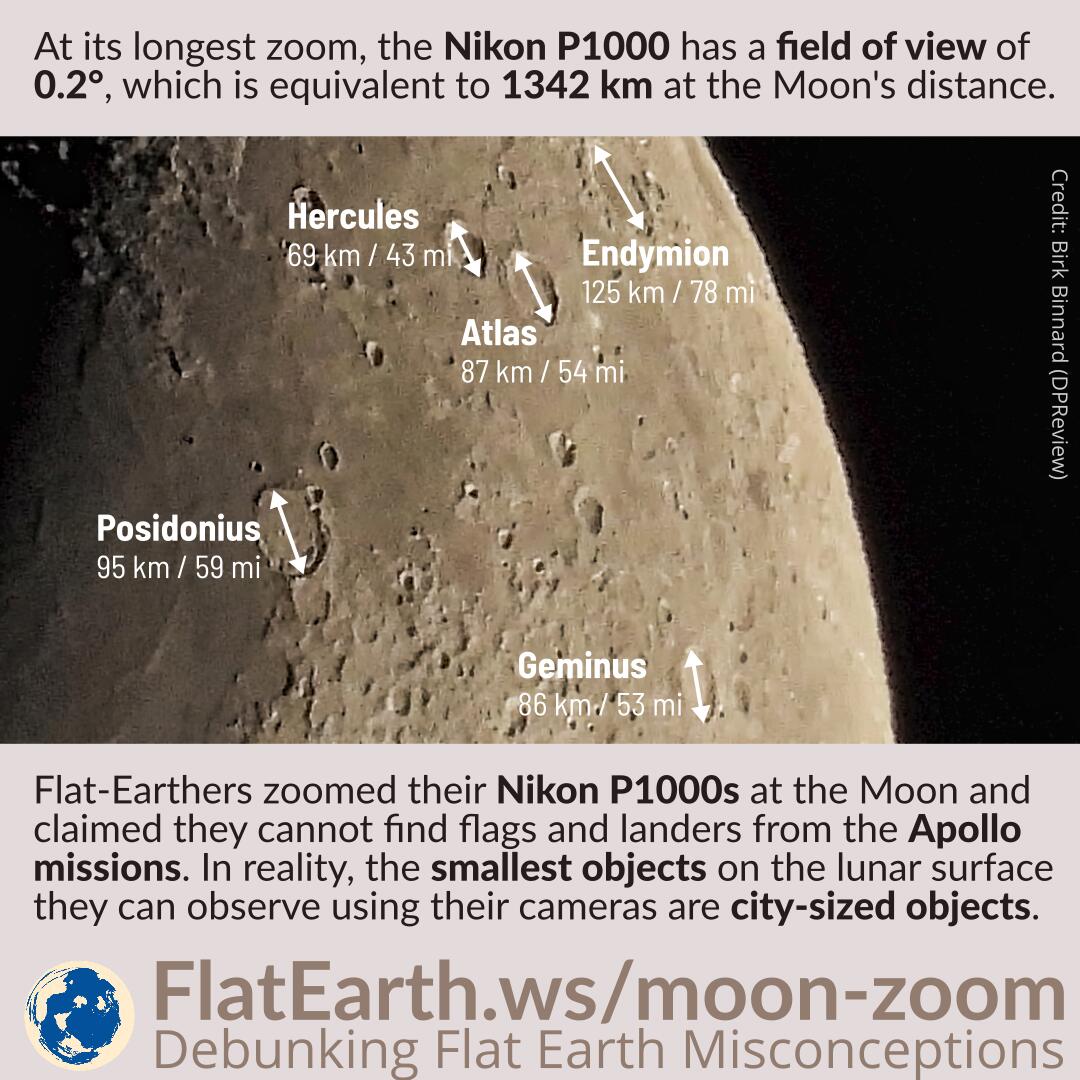At the longest zoom, the Nikon P1000 has a field of view of 0.2°, which is equivalent to 1342 km at the Moon’s distance.
Flat-Earthers zoomed their Nikon P1000 at the Moon and claimed that they could not find flags and landers from the Apollo missions. In reality, the smallest objects on the lunar surface they can observe using their cameras are large city-sized objects.
The Nikon P1000 has a 4.3-539mm 1:2.8–8 lens. At its longest zoom, it has an aperture diameter of 539 mm / 8 = 67 mm = 6.7 cm. By applying the Dawes’ limit, we can determine that the camera’s maximum resolving power is R = 11.6/6.7 cm = 1.73 arcseconds = 0.00048°. At the Moon’s distance, it is equivalent to 3.2 km. It means the absolutely smallest object that can be resolved by the camera on the surface of the Moon is a 3.2 km-sized object. And that object will appear only as a distinct dot. To recognize the shape of an object, the object has to be much larger. To capture a sharp, 100-pixel image of an object on the Moon using the camera, the object needs to be about 160 km in size.
References
- Dawes’ limit – Wikipedia
- Angular resolution – Wikipedia


